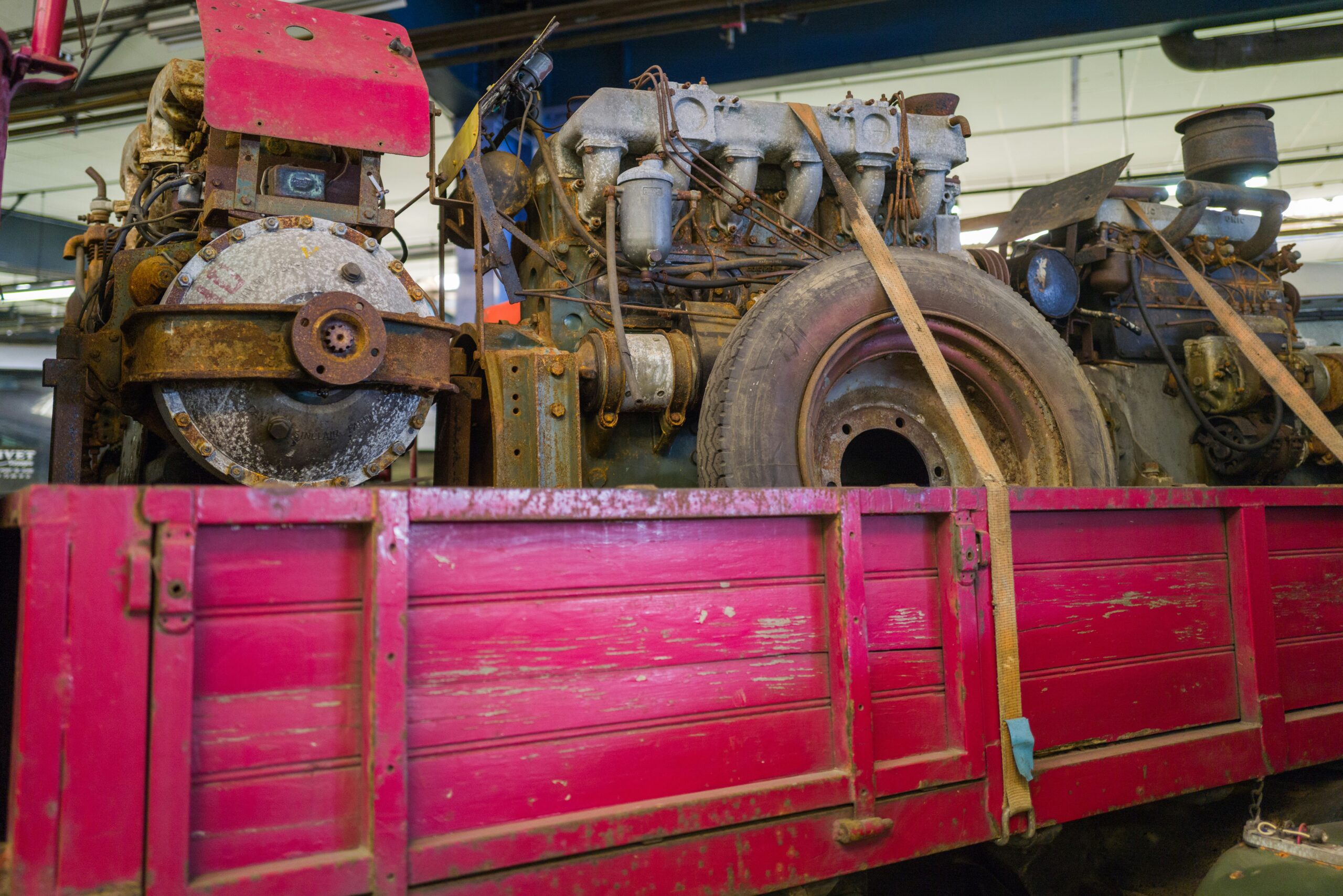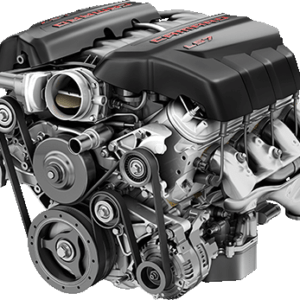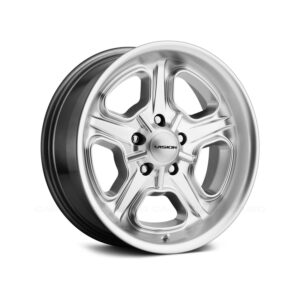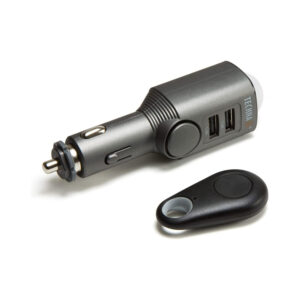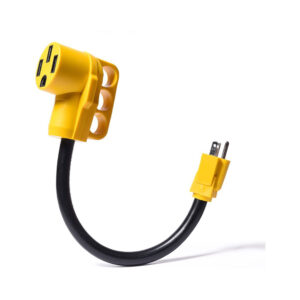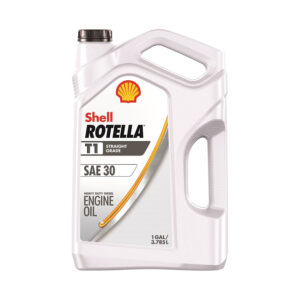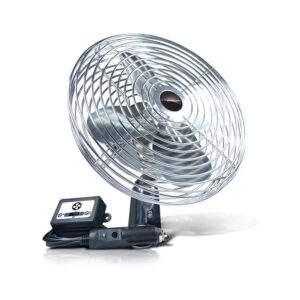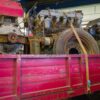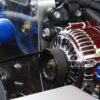Does Using Used Engines Really Save Money?
I. Introduction
When it comes to engine replacements, one option that many people consider is purchasing a used engine. The idea of saving money by opting for a used engine can be appealing, but is it really a cost-effective choice? In this article, we will analyze the financial implications of using used engines and explore whether they truly save money in the long run.
II. Overview of Used Engines
Used engines are pre-owned engines that have been removed from vehicles and are available for purchase. They can be sourced from salvage yards or online marketplaces. People often choose to buy used engines for various reasons, including affordability and the availability of specific engine models.
III. Cost Comparison: New vs. Used Engines
One of the primary factors to consider when deciding between a new or used engine is the initial cost. New engines typically come with a higher price tag, while used engines are generally more affordable. However, the cost of used engines can vary depending on factors such as mileage, condition, and age.
It is important to note that simply comparing the initial cost may not provide a complete picture of the financial implications. To illustrate this, we can examine case studies or examples that highlight the cost differences between new and used engines.
IV. Installation and Labor Costs
Another aspect to consider when evaluating the cost-effectiveness of used engines is the installation and labor costs. Installing a new engine can be a complex and expensive process. On the other hand, using a used engine may result in potential savings on installation and labor costs.
By comparing the installation costs for new and used engines, as well as factoring in the associated labor costs, we can gain a better understanding of the potential savings that can be achieved with used engines.
V. Long-Term Financial Considerations
While the initial cost and installation savings are important, it is crucial to consider the long-term financial implications of using a used engine. One aspect to examine is the durability and reliability of used engines. While some used engines may offer reliable performance, there is always a risk of hidden damage or wear and tear that may result in higher maintenance and repair costs over time.
Additionally, warranty coverage differs between new and used engines. New engines often come with comprehensive warranty coverage, while used engines may have limited or no warranty. Considering these factors, a total cost of ownership analysis can provide a more accurate assessment of the financial implications of using used engines.
VI. Environmental Impact
Aside from financial considerations, using used engines can also have environmental benefits. Reusing engines reduces the need for new engine manufacturing, which has a significant environmental impact. Manufacturing new engines requires the extraction of raw materials, energy consumption, and contributes to greenhouse gas emissions.
By opting for a used engine, individuals can contribute to sustainability efforts and reduce their carbon footprint. It is important to consider the environmental costs associated with new engine manufacturing when evaluating the overall impact of using used engines.
VII. Risk Assessment and Mitigation
While using used engines can offer cost savings, there are potential risks involved. Hidden damage or undisclosed issues may impact the performance and longevity of the engine. To mitigate these risks, thorough inspections and purchasing from reputable sellers are essential.
Research and due diligence play a crucial role in ensuring that the used engine is in good condition and meets the necessary requirements. By taking these precautions, individuals can minimize the potential risks associated with using used engines.
VIII. Factors Influencing Cost Savings
Several factors can influence the cost savings achieved by using used engines. The type and model of the vehicle can impact the availability of compatible used engines and the associated costs. Additionally, the availability of parts and components can affect the overall cost of repairs and maintenance.
Market conditions and pricing trends also play a role in determining the cost savings. By staying informed about these factors, individuals can make more informed decisions regarding the purchase and use of used engines.
IX. Case Studies or Testimonials
Real-life experiences of individuals or businesses who have used used engines can provide valuable insights. These case studies or testimonials can highlight the actual cost savings achieved and the impact on the financial bottom line. Lessons learned from these experiences can help others make informed decisions when considering the use of used engines.
X. Conclusion
After analyzing the financial implications of using used engines, it is clear that they can indeed save money in certain situations. However, it is important to consider the initial cost, installation and labor savings, long-term maintenance and repair costs, warranty coverage, and the environmental impact.
Consumers should conduct thorough research, assess their specific needs, and weigh the potential risks and benefits before making a decision. By doing so, they can make informed choices that align with their financial goals and contribute to sustainable practices in the automotive industry.
-
Product on sale
%22%20transform%3D%22translate(.6%20.6)%20scale(1.17188)%22%20fill-opacity%3D%22.5%22%3E%3Cellipse%20rx%3D%221%22%20ry%3D%221%22%20transform%3D%22matrix(-14.91868%20-47.60558%2025.76293%20-8.07361%20255.1%20246.2)%22%2F%3E%3Cellipse%20fill%3D%22%23949494%22%20rx%3D%221%22%20ry%3D%221%22%20transform%3D%22matrix(-8.84926%2028.76497%20-103.57517%20-31.86388%20232.7%20145.3)%22%2F%3E%3Cellipse%20fill%3D%22%232f2f2f%22%20rx%3D%221%22%20ry%3D%221%22%20transform%3D%22matrix(-144.12834%20-11.0009%201.86942%20-24.49224%20231.2%2072.2)%22%2F%3E%3Cellipse%20fill%3D%22%23a0a0a0%22%20cx%3D%22210%22%20cy%3D%225%22%20rx%3D%22122%22%20ry%3D%2216%22%2F%3E%3C%2Fg%3E%3C%2Fsvg%3E) Used 2019 Audi A5 EngineOriginal price was: $2,540.00.$2,200.00Current price is: $2,200.00.
Used 2019 Audi A5 EngineOriginal price was: $2,540.00.$2,200.00Current price is: $2,200.00. -
%22%20transform%3D%22translate(.6%20.6)%20scale(1.17188)%22%20fill-opacity%3D%22.5%22%3E%3Cellipse%20fill%3D%22%23939393%22%20rx%3D%221%22%20ry%3D%221%22%20transform%3D%22matrix(-6.0922%20-79.1752%2097.6267%20-7.51197%20111.1%20125.3)%22%2F%3E%3Cellipse%20fill%3D%22%23fff%22%20rx%3D%221%22%20ry%3D%221%22%20transform%3D%22matrix(-45.1543%20-3.15253%2017.76008%20-254.38078%20231.8%20123.8)%22%2F%3E%3Cellipse%20fill%3D%22%23fff%22%20rx%3D%221%22%20ry%3D%221%22%20transform%3D%22rotate(179.3%2032.6%20121.8)%20scale(254.91488%2025.60303)%22%2F%3E%3Cellipse%20fill%3D%22%23fff%22%20cx%3D%2269%22%20cy%3D%2214%22%20rx%3D%22255%22%20ry%3D%2228%22%2F%3E%3C%2Fg%3E%3C%2Fsvg%3E) VISION® – 147 DAYTONA Hyper Silver$254.00
VISION® – 147 DAYTONA Hyper Silver$254.00 -
%22%20transform%3D%22translate(.6%20.6)%20scale(1.17188)%22%20fill-opacity%3D%22.5%22%3E%3Cellipse%20fill%3D%22%23333%22%20rx%3D%221%22%20ry%3D%221%22%20transform%3D%22rotate(90.5%20-16.9%20134.9)%20scale(44.78751%2088.87194)%22%2F%3E%3Cellipse%20fill%3D%22%23fff%22%20rx%3D%221%22%20ry%3D%221%22%20transform%3D%22matrix(254.32847%20-18.49408%203.31453%2045.58102%20108.2%2034.6)%22%2F%3E%3Cellipse%20fill%3D%22%23fff%22%20cx%3D%22141%22%20cy%3D%22233%22%20rx%3D%22255%22%20ry%3D%2229%22%2F%3E%3Cellipse%20fill%3D%22%23939393%22%20rx%3D%221%22%20ry%3D%221%22%20transform%3D%22matrix(-17.35218%20-42.2719%2032.35447%20-13.28118%20173.1%20111.9)%22%2F%3E%3C%2Fg%3E%3C%2Fsvg%3E) Thinkware F770 Dash Cam Dual Channel Wifi GPS 16GB$268.99
Thinkware F770 Dash Cam Dual Channel Wifi GPS 16GB$268.99 -
%22%20transform%3D%22translate(.6%20.6)%20scale(1.17188)%22%20fill-opacity%3D%22.5%22%3E%3Cellipse%20fill%3D%22%235e5e5e%22%20rx%3D%221%22%20ry%3D%221%22%20transform%3D%22matrix(-32.97618%20-66.50383%2053.91698%20-26.73494%20160.5%20127.7)%22%2F%3E%3Cellipse%20fill%3D%22%23fff%22%20cx%3D%2257%22%20cy%3D%2232%22%20rx%3D%22115%22%20ry%3D%2257%22%2F%3E%3Cellipse%20fill%3D%22%23fff%22%20cx%3D%2264%22%20cy%3D%22247%22%20rx%3D%2285%22%20ry%3D%2285%22%2F%3E%3Cellipse%20fill%3D%22%23969696%22%20rx%3D%221%22%20ry%3D%221%22%20transform%3D%22matrix(8.77577%2033.45124%20-43.30069%2011.35972%2081.3%20131)%22%2F%3E%3C%2Fg%3E%3C%2Fsvg%3E) Technaxx car Alarm with Charging Function TX-100$51.99
Technaxx car Alarm with Charging Function TX-100$51.99 -
Product on sale
%27%20fill-opacity%3D%27.5%27%3E%3Cellipse%20fill%3D%22%23828282%22%20fill-opacity%3D%22.5%22%20rx%3D%221%22%20ry%3D%221%22%20transform%3D%22matrix(-95.33031%2020.61114%20-11.4762%20-53.07956%20146.2%20144.4)%22%2F%3E%3Cellipse%20fill%3D%22%23fff%22%20fill-opacity%3D%22.5%22%20rx%3D%221%22%20ry%3D%221%22%20transform%3D%22matrix(-297.29834%2030.19846%20-5.88449%20-57.93168%20164.6%20263.9)%22%2F%3E%3Cellipse%20fill%3D%22%23fff%22%20fill-opacity%3D%22.5%22%20rx%3D%221%22%20ry%3D%221%22%20transform%3D%22matrix(-6.38081%20-52.02181%20296.6053%20-36.38055%20147.9%2024.3)%22%2F%3E%3Cellipse%20fill%3D%22%238d8d8d%22%20fill-opacity%3D%22.5%22%20rx%3D%221%22%20ry%3D%221%22%20transform%3D%22matrix(69.17793%20-13.53844%205.03039%2025.70398%20145.1%20148.8)%22%2F%3E%3C%2Fg%3E%3C%2Fsvg%3E) Spyder® – Projector HeadlightsOriginal price was: $582.99.$521.89Current price is: $521.89.
Spyder® – Projector HeadlightsOriginal price was: $582.99.$521.89Current price is: $521.89. -
Product on sale
%27%20fill-opacity%3D%27.5%27%3E%3Cellipse%20fill%3D%22%23787878%22%20fill-opacity%3D%22.5%22%20rx%3D%221%22%20ry%3D%221%22%20transform%3D%22rotate(81.7%20-12.6%20159.8)%20scale(59.74288%2085.71618)%22%2F%3E%3Cellipse%20fill%3D%22%23fff%22%20fill-opacity%3D%22.5%22%20rx%3D%221%22%20ry%3D%221%22%20transform%3D%22matrix(298.7511%206.78465%20-1.4292%2062.9324%20181.5%20277.7)%22%2F%3E%3Cellipse%20fill%3D%22%23fff%22%20fill-opacity%3D%22.5%22%20rx%3D%221%22%20ry%3D%221%22%20transform%3D%22matrix(-11.00332%20-58.34049%20293.6509%20-55.3841%20153.6%2017)%22%2F%3E%3Cellipse%20fill%3D%22%23fff%22%20fill-opacity%3D%22.5%22%20rx%3D%221%22%20ry%3D%221%22%20transform%3D%22matrix(-50.55792%20-11.21998%2054.06182%20-243.6058%20299.4%20161.8)%22%2F%3E%3C%2Fg%3E%3C%2Fsvg%3E) Spec-D® – Projector HeadlightsOriginal price was: $364.86.$279.02Current price is: $279.02.
Spec-D® – Projector HeadlightsOriginal price was: $364.86.$279.02Current price is: $279.02. -
Product on sale
%22%20transform%3D%22translate(.6%20.6)%20scale(1.17188)%22%20fill-opacity%3D%22.5%22%3E%3Cellipse%20fill%3D%22%23d4b349%22%20cx%3D%2260%22%20cy%3D%2274%22%20rx%3D%2242%22%20ry%3D%2254%22%2F%3E%3Cpath%20fill%3D%22%23fff%22%20d%3D%22M109%20184l2-200%20160%2034z%22%2F%3E%3Cellipse%20fill%3D%22%23cdd0d6%22%20rx%3D%221%22%20ry%3D%221%22%20transform%3D%22matrix(31.64382%20-23.2447%2053.66035%2073.04972%2080%20194.1)%22%2F%3E%3Cellipse%20fill%3D%22%23fff%22%20rx%3D%221%22%20ry%3D%221%22%20transform%3D%22rotate(92.5%2059.7%20183.6)%20scale(202.40401%2055.05129)%22%2F%3E%3C%2Fg%3E%3C%2Fsvg%3E) SnowyFox RV 15Amp to 50Amp Adapter – 15MaleOriginal price was: $25.98.$23.88Current price is: $23.88.
SnowyFox RV 15Amp to 50Amp Adapter – 15MaleOriginal price was: $25.98.$23.88Current price is: $23.88. -
Product on sale
%22%20transform%3D%22translate(.6%20.6)%20scale(1.17188)%22%20fill-opacity%3D%22.5%22%3E%3Cellipse%20fill%3D%22%23c9c9c9%22%20cx%3D%22118%22%20cy%3D%22126%22%20rx%3D%2271%22%20ry%3D%22102%22%2F%3E%3Cellipse%20fill%3D%22%23a7a7a7%22%20cx%3D%22100%22%20cy%3D%22122%22%20rx%3D%2227%22%20ry%3D%2228%22%2F%3E%3Cellipse%20fill%3D%22%23fff%22%20cx%3D%22222%22%20cy%3D%22104%22%20rx%3D%2246%22%20ry%3D%22255%22%2F%3E%3Cellipse%20fill%3D%22%23fff%22%20rx%3D%221%22%20ry%3D%221%22%20transform%3D%22matrix(1.33517%20-254.9965%2026.63175%20.13944%2023.5%20106.6)%22%2F%3E%3C%2Fg%3E%3C%2Fsvg%3E) Shell Rotella T1 SAE 30 Conventional Heavy DutyOriginal price was: $24.85.$17.85Current price is: $17.85.
Shell Rotella T1 SAE 30 Conventional Heavy DutyOriginal price was: $24.85.$17.85Current price is: $17.85. -
Product on sale
%27%20fill-opacity%3D%27.5%27%3E%3Cellipse%20fill%3D%22%23828282%22%20fill-opacity%3D%22.5%22%20rx%3D%221%22%20ry%3D%221%22%20transform%3D%22rotate(-161.9%2080%2070.9)%20scale(65.87419%20106.79056)%22%2F%3E%3Cellipse%20fill%3D%22%23fff%22%20fill-opacity%3D%22.5%22%20rx%3D%221%22%20ry%3D%221%22%20transform%3D%22matrix(-53.32686%20-3.31873%2018.5613%20-298.25111%20260.6%20169.5)%22%2F%3E%3Cellipse%20fill%3D%22%23fff%22%20fill-opacity%3D%22.5%22%20rx%3D%221%22%20ry%3D%221%22%20transform%3D%22rotate(-172.3%2012.8%2064.1)%20scale(36.01062%20298.82809)%22%2F%3E%3Cellipse%20fill%3D%22%23fff%22%20fill-opacity%3D%22.5%22%20rx%3D%221%22%20ry%3D%221%22%20transform%3D%22matrix(-165.83187%20182.88751%20-40.34975%20-36.58683%20251%20254.8)%22%2F%3E%3C%2Fg%3E%3C%2Fsvg%3E) Schumacher 125 Chrome Fan 12VOriginal price was: $45.99.$30.54Current price is: $30.54.
Schumacher 125 Chrome Fan 12VOriginal price was: $45.99.$30.54Current price is: $30.54.


